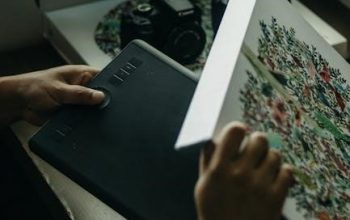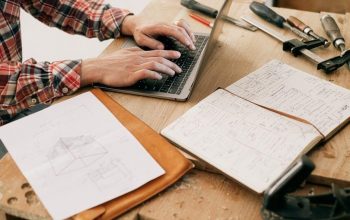Identifying Your Singer Sewing Machine Model
Locate the model number and serial number, usually on a plate on the machine. Use online databases and manuals to identify your specific model. Many resources offer model identification assistance.
Finding the Model Number and Serial Number
To identify your vintage Singer sewing machine, first locate the model and serial numbers. These are typically stamped on a metal plate attached to the machine’s body. Common locations include the front, side, or underneath the machine. The model number is crucial for finding the correct manual. The serial number helps track the machine’s production date and potentially provides access to additional historical information. Carefully clean any dust or grime obstructing the numbers before attempting to read them. Use a bright light and magnifying glass if necessary for clear visibility. Once you have accurately recorded these numbers, you can proceed to utilize online resources and databases designed to assist in locating your machine’s specific manual.
Using Online Databases and Manuals
Once you’ve located your Singer sewing machine’s model and serial numbers, several online resources can help you find the corresponding manual. Websites specializing in vintage sewing machines often have databases of manuals, sometimes offering free downloads or links to purchase copies. Search engines can also be helpful, using keywords like “Singer [model number] manual.” Check online forums and communities dedicated to sewing and vintage sewing machines. Enthusiasts often share links to manuals and offer assistance with identification. Remember to carefully compare the images and descriptions in online listings with your machine to ensure a match. Sites like eBay and Etsy may also have listings for original or reproduction manuals. Be aware of pricing variations and the condition of the offered manual before purchasing.
Understanding Your Manual’s Contents
Your Singer sewing machine manual is your guide to operation, maintenance, and troubleshooting. Familiarize yourself with its sections for optimal use and longevity of your machine.
Troubleshooting Common Issues
Singer sewing machine manuals often dedicate a significant portion to troubleshooting. These sections typically address common problems like skipped stitches, uneven stitch length, or thread breakage. The manuals provide step-by-step guidance, suggesting checks for proper threading, needle type and placement, bobbin winding, and tension adjustments; Illustrations and diagrams are frequently included to clarify the procedures. Understanding these troubleshooting steps minimizes downtime and allows for quick repairs, keeping your sewing projects on track. Remember to always consult your specific machine’s manual as solutions may vary depending on the model and its unique mechanisms. Many online resources also complement the manual, offering video tutorials and community forums where users share solutions and experiences. This combined approach ensures you can effectively diagnose and solve a wide range of issues.
Maintenance and Cleaning
Regular maintenance is crucial for prolonging the life of your vintage Singer sewing machine. Your manual will detail the proper cleaning methods, emphasizing the importance of removing lint and dust from the bobbin case, feed dogs, and shuttle area. Use a soft brush or compressed air for this task. Lubrication is also vital; the manual specifies which type of oil to use and where to apply it. Avoid over-lubrication, as this can attract more dust and grime. Periodically inspect the needle plate for damage or wear. Replacing worn parts promptly prevents further damage to your machine. Remember to unplug the machine before any cleaning or maintenance. Consult your manual for specific instructions on cleaning specific components. Following these simple maintenance steps will ensure your Singer sewing machine operates smoothly and efficiently for years to come, preserving its value and functionality.
Essential Sewing Machine Parts
Understanding your Singer’s key components is vital. This includes the needle, bobbin, tension dials, and stitch length controls. Familiarize yourself with their functions for smoother sewing.
Needle and Bobbin
The needle, a crucial component, guides the upper thread, creating the stitch. Different needle types exist for various fabrics; using the incorrect one can lead to broken needles or poor stitch quality. Consult your manual for recommended needle sizes and types. The bobbin, housed within the bobbin case, holds the lower thread, essential for forming the stitch. Ensure correct bobbin winding and placement to prevent thread jams and tangled stitches. Properly threading both the needle and bobbin is fundamental for successful sewing. Inspect for damage or wear before each sewing session; replacing worn parts prevents sewing mishaps. A clean bobbin case ensures smooth thread flow. Regular cleaning prevents lint buildup, improving performance. The appropriate needle and bobbin selection dramatically affects stitch quality and machine longevity. Learning to correctly thread and maintain these parts is a foundational skill for every sewer. Incorrect usage can result in skipped stitches, broken threads, or even needle breakage.
Tension and Stitch Adjustment
Proper tension is crucial for balanced stitches; uneven tension leads to puckering or loose stitches. Adjust the tension dial, usually a numbered knob, to control the upper thread’s tightness. Experiment with different settings to find the optimal balance for your fabric and thread type. The stitch length is adjustable, often controlled by a lever or dial. Longer stitches are suitable for basting or gathering, while shorter ones are ideal for precise seams. Your manual details the stitch length range and recommended settings for different sewing tasks. Consistent stitch length ensures even seam appearance and stitch strength. Experimenting with tension and stitch length allows you to adapt to different fabrics and sewing projects. Mastering these adjustments transforms your sewing experience, enabling you to create professional-looking projects. Incorrect settings result in poor stitch quality, potentially damaging your fabric. Regular maintenance, including cleaning and lubrication, helps maintain optimal tension and stitch quality. Always consult your machine’s manual for specific instructions and troubleshooting advice related to tension and stitch length.
Operating Your Singer Sewing Machine
Learn to thread your vintage Singer correctly, following your manual’s diagrams. Master basic sewing techniques like straight stitching and reverse stitching. Practice on scrap fabric before tackling your project.
Threading the Machine
Threading a vintage Singer sewing machine can seem daunting, but with careful attention to your machine’s specific manual, it becomes straightforward. Begin by raising the presser foot and needle to their highest positions. Locate the spool pin and place your spool of thread on it. Guide the thread through the tension discs, ensuring it sits comfortably within the grooves. Next, thread the take-up lever, carefully following the path indicated in your manual; this is crucial for consistent stitch formation. After that, thread the needle from front to back, ensuring the thread tail is left dangling a few inches for ease of starting. Finally, carefully engage the bobbin winder if necessary. Remember, patience is key when working with an older machine; take your time and consult your manual frequently. With a little practice, threading your vintage Singer will become second nature. Improper threading can lead to skipped stitches and broken threads.
Basic Sewing Techniques
Mastering basic sewing techniques on your vintage Singer involves understanding its unique characteristics. Begin with straight stitching, practicing consistent speed and even fabric feed. Experiment with different stitch lengths to find what works best for various fabrics. Learn to adjust the tension dial for optimal stitch formation, preventing puckering or loose stitches. Next, tackle seams, practicing neat and accurate joining of fabric pieces. Experiment with different seam allowances, learning how to press seams flat to create a clean finish. Moving on to turning corners, practice smooth transitions, avoiding bunching or puckering. Finally, learn to backstitch at the beginning and end of seams to secure stitching. Remember, practice is key when learning to use a vintage Singer sewing machine. Consult your manual for specific instructions and tips.
Advanced Techniques and Attachments
Explore specialized presser feet for tasks like zippers, buttons, and buttonholes. Learn to use decorative stitches and attachments for embellishments. Online resources and vintage manuals offer guidance.
Using Special Feet and Attachments
Many vintage Singer sewing machines came with a variety of presser feet and attachments designed for specific sewing tasks. These specialized tools significantly expand the capabilities of your machine beyond basic straight stitching. A zipper foot, for instance, allows for the precise sewing of zippers without stitching over the zipper teeth. A buttonhole foot enables the creation of consistent and even buttonholes. Other specialized feet might include those for blind hemming, cording, or decorative stitching. Your machine’s manual, if you have it, will contain detailed instructions on how to use each attachment. If not, many online resources, including forums dedicated to vintage Singer machines, offer guidance and troubleshooting tips. Remember to always consult your manual or online resources before using any attachment to avoid damaging your machine or causing injury. Proper installation and use of these attachments are essential for achieving professional-looking results and extending the life of your vintage sewing machine.
Repair and Maintenance Resources
Maintaining your vintage Singer sewing machine requires a proactive approach. Regular cleaning and oiling are crucial to prevent mechanical issues and ensure smooth operation. Start by consulting your machine’s manual for specific lubrication points and recommended lubricants. Many online resources provide detailed cleaning and maintenance guides for various Singer models. These often include video tutorials demonstrating proper techniques. For more complex repairs, consider contacting a professional vintage sewing machine repair technician. Local sewing machine shops or online forums can help you locate reputable specialists in your area. Remember, attempting advanced repairs without proper knowledge could cause further damage. Additionally, sourcing replacement parts for older machines might require some research. Online retailers specializing in vintage sewing machine parts, or even eBay, can be valuable sources for finding needed components. Prioritize preventative maintenance to minimize the need for extensive repairs and keep your vintage Singer sewing machine running smoothly for years to come.


